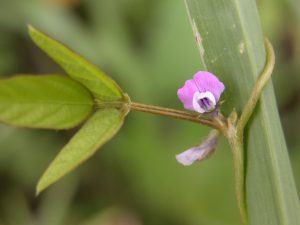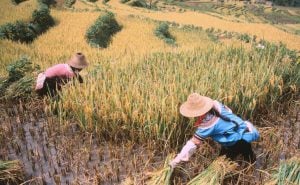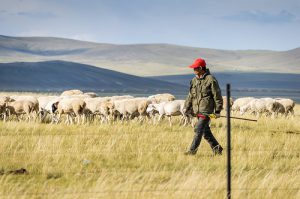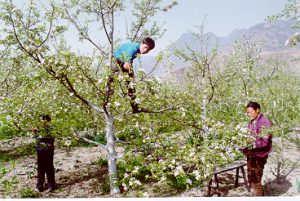Modern farming and production techniques, consumer demand and large-scale retail industries have all contributed to the need for greater uniformity in our crops. The downside of this is a decline in genetic diversity and greater vulnerability to pest and disease outbreaks and environmental stresses.
China has long been recognised as a centre of diversity of food crops of major global importance, including rice, soybean, grape, banana, citrus fruits and stonefruits. The country’s remarkable wild plant diversity comprises more than 20,000 native flowering plant species, a proportion of which have value as gene donors for crop improvement. However, until now, the full range of these potentially valuable wild species had not been identified.
Using previously published works on the flora of China (namely the China Checklist of Higher Plants and China Red List of Biodiversity), combined with data and knowledge generated in studies previously undertaken in Europe, our research has revealed more than 800 wild plant species native to China that are of potential use to adapt 28 nationally and globally important food crops to withstand the detrimental impacts of climate change.
Notably, 42% of these species occur nowhere else in the world and at least 17% are highly threatened by agro-forestry, infrastructure development and other forms of habitat loss and degradation. This includes wild relatives of 16 crops that are globally threatened because they do not occur anywhere else in the world.
The species occur in all parts of China but areas of particular concern are the provinces of Yunnan, Guangxi, Sichuan, Hainan and Guangdong, which contain the highest numbers of endemic and threatened species.
These wild plant species are known as crop wild relatives (CWR). They include crop ancestors and closely related species and grow under a broad range of environmental conditions in their natural habitats. CWR are therefore highly genetically variable and their adaptive traits can be transferred to crops by plant breeders to improve tolerance to extreme environmental conditions and exposure to different pests and diseases, which helps sustain food production. Furthermore, CWR can be utilised to improve the nutritional and marketing qualities of crops.
Examples of China’s CWR successfully used to improve crops include: Oryza rufipogon, a wild relative of rice, utilised to confer tolerance to drought and aluminium toxicity; Glycine soja, used to improve protein content in soybean; and Vitis amurensis, a wild relative of grape, which has been used to improve cold tolerance.
So why are wild species of crops so important today? Climate change is causing extreme and unexpected environmental conditions and forcing plant breeders to find new varieties that can cope and yield under these new pressures. Because of the diversity they contain, CWR are likely to become increasingly important for adapting crops so that they can yield under a range of progressively detrimental stresses resulting from climate change, such as drought, flooding and new strains of pests and diseases, as well as under more frequent and extreme climatic fluctuations.
However, ironically, like the crops themselves, wild relative populations are threatened by climate change, as well as a range of other human-induced pressures affecting wild plant species in their native habitats.
International organisations (such as the Food and Agriculture Organization of the United Nations – FAO) and treaties (such as the Convention on Biological Diversity and FAO International Treaty on Plant Genetic Resources for Food and Agriculture) acknowledge the importance of CWR as vital sources of diversity for crop improvement and food security. Yet, CWR are far from adequately conserved, both ex situ in gene banks and in situ in their natural habitats.
With more plant species than Europe and CWR of globally important food crops, China’s position as a provider of plant genetic resources for crop improvement is crucial to us all globally. Now that we have identified China’s priority CWR and some of the hotspots in which they occur, authorities and stakeholders in China urgently need to develop and implement a conservation strategy to secure their future.
Shelagh Kell is a Research Fellow at the University of Birmingham, where the research on CWR was undertaken in collaboration with the Institute of Botany, Chinese Academy of Sciences and China Agricultural University in Beijing. The work was funded by the UK’s Department for Environment, Food and Rural Affairs (Defra) and the Chinese Ministry of Agriculture under the umbrella of the China–UK Sustainable Agriculture Innovation Network (SAIN).








